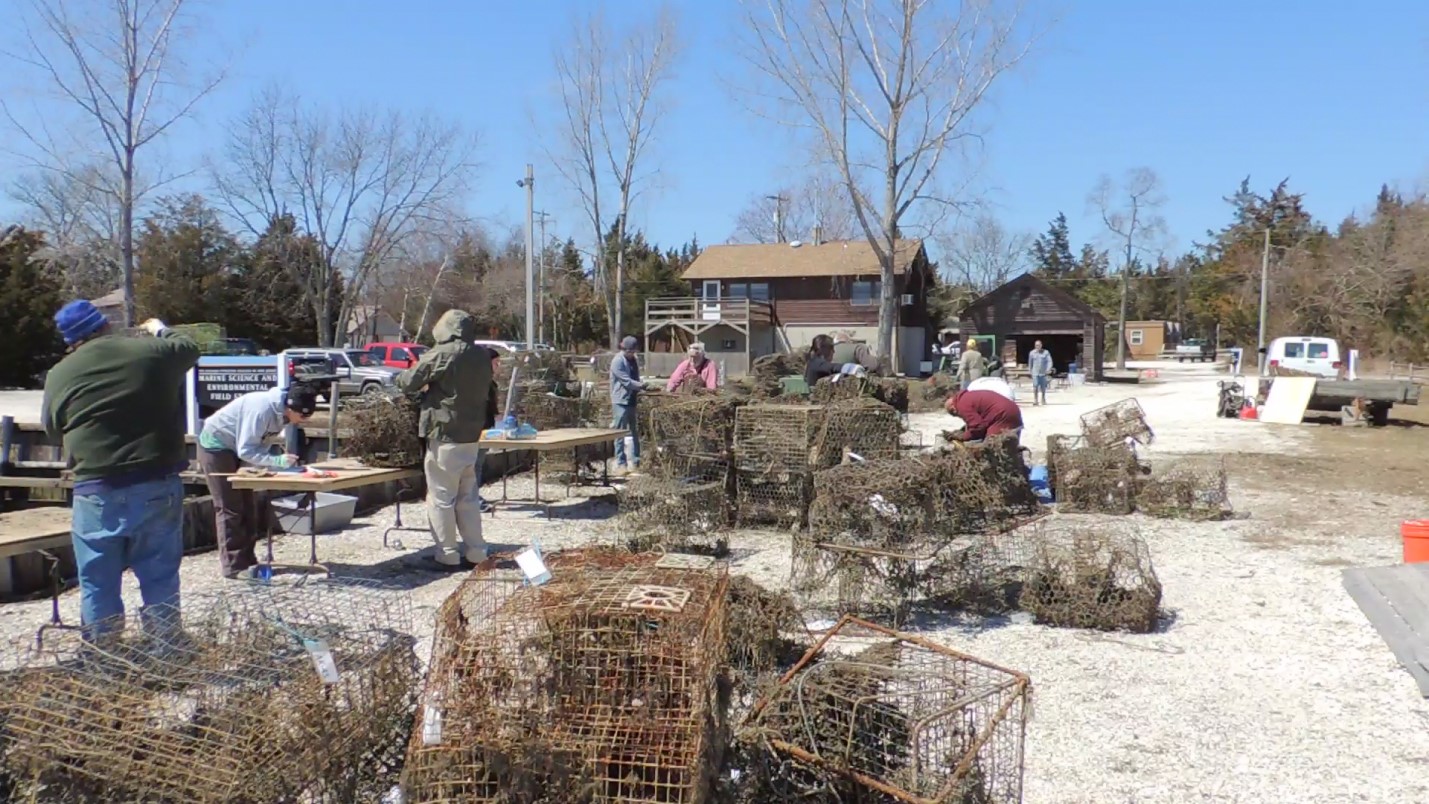Sunken crab traps severed from their buoy lifelines, often called ghost pots, slowly corrode in the saline waters and haunt the muddy floors of Atlantic coastal bays as they continue to trap sea life and pose threats to boaters.
After a successful two-year, NOAA-funded marine debris removal project to recover ghost pots, NOAA has awarded Stockton University additional funding to expand the project and provide sonar training to local crabbers to prevent further losses of crab traps over the next two years.
Stockton’s Marine Science Field Station and crabbers from the community recovered 1,166 ghost pots, weighing in at 7.89 metric tons, from the Mullica River Great Bay Estuary from 2012 to 2014.
A total of $241,597 will support Stockton’s expanded marine debris removal and prevention program beginning this November. About half of the total was granted by NOAA with the other half being an in-kind match by Stockton.

Stockton’s crabbing partners, faculty, staff, undergraduate students and Jacques Cousteau Reserve volunteers work at the university’s Marine Field Station on its annual crab pot processing day last year, where derelict crab pots collected by participating crabbers are returned to the crabbing community or broken down for recycling. Credit: Stockton University
Mark Sullivan, associate professor of Marine Science, Steve Evert, manager of Stockton’s field station in Port Republic and assistant director of academic labs, and Peter Straub, interim dean of the School of Natural Sciences and Mathematics and professor of Biology, are leading the initiative. The Stockton team is partnering with Fred Akers, administrator for the Great Egg Harbor Watershed Association, and Melanie Reding, education coordinator at the Jacques Cousteau National Estuarine Research Reserve.
This year, Stockton will go beyond the Mullica River Great Bay system, where the initiative began. The expanded project will focus on the Atlantic coastal bays behind the barrier islands from Little Egg Inlet, which is between Long Beach Island and Brigantine, south to Great Egg Harbor Bay, behind Ocean City.
The Stockton team will use state-of-the-art sonar technology “to create precise maps to point crabbers, equipped with low-cost sonar systems, to exact locations with crab pots,” explained Evert.
Using the maps and sonar, crabbers will navigate to the lost traps and use grappling hooks to haul them from the bay. Marked traps in good condition will be returned to the owners, and unusable traps will be recycled.
Crabbers who worked with Stockton over the past two years will now train new crabbing partners in the new regions.
Locally, the density of lost traps can be as high as 250-300 traps per square kilometer.
During the last two-year project, Stockton estimates that a value of $13,240 in crab pots was returned for reuse by collaborating crabbers. An additional $2,500 in reusable parts and recycled scrap metal was recaptured.
“The collaborating crabbers have become our partners and friends. After being surprised at the number of lost pots, they are willing to train more crabbers on sonar,” said Evert.
Commercially licensed crabbers who are interested in getting involved can contact Steve Evert by calling 609-652-4486.
The sonar and recovery work will be completed outside the crabbing season over the winter, from November through April, with consistent interaction between Stockton partners and local crabbers.
“This NOAA grant and the preceding one grew directly out of observations made during Stockton undergraduate courses dating back to about 2007 at the field station with university equipment during my Scientific Diving and Underwater Survey Methods courses,” explained Peter Straub.
As students were learning to use marine technology in the field, they repeatedly came across abandoned crab pots. An opportunity to recover these accidental hazards and restore habitats to a healthier state presented itself.
“Estuaries in southern New Jersey are quickly becoming model systems for gear removal and education,” Sullivan said.
Stockton is also partnering with the Conserve Wildlife Foundation of New Jersey to recover traps in the Barnegat Bay and with the Jacques Cousteau National Estuarine Research Reserve to prevent trap losses through educational programs.
“Initially, crabbers were doubtful that their efforts would make an impact. Now, after seeing great results, they believe strongly in the project and are recovering their own lost pots. Not only are we saving lost traps, we are breaking the cycle and reducing bycatch through public education and low-cost sonar training of commercial crabbers” said Evert.
For more information, visit NOAA’s marine debris blog, which announces all of the grant recipients across the nation, and the local project’s website, We Crab NJ.